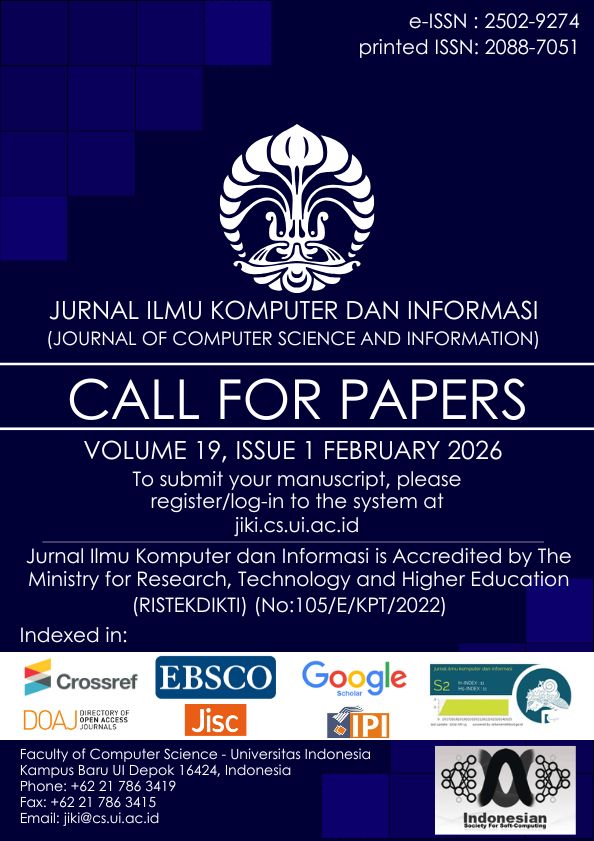Face Spoofing Detection using Inception-v3 on RGB Modal and Depth Modal
DOI:
https://doi.org/10.21609/jiki.v16i1.1100Keywords:
face spoofing, real, spoof, Inception-v3, depthAbstract
Face spoofing can provide inaccurate face verification results in the face recognition system. Deep learning has been widely used to solve face spoofing problems. In face spoofing detection, it is unnecessary to use the entire network layer to represent the difference between real and spoof features. This study detects face spoofing by cutting the Inception-v3 network and utilizing RGB modal, depth, and fusion approaches. The results showed that face spoofing detection has a good performance on the RGB and fusion models. Both models have better performance than the depth model because RGB modal can represent the difference between real and spoof features, and RGB modal dominate the fusion model. The RGB model has accuracy, precision, recall, F1-score, and AUC values obtained respectively 98.78%, 99.22%, 99.31.2%, 99.27%, and 0.9997 while the fusion model is 98.5%, 99.31%, 98.88%. 99.09%, and 0.9995, respectively. Our proposed method with cutting the Inception-v3 network to mixed6 successfully outperforms the previous study with accuracy up to 100% using the MSU MFSD benchmark dataset.Downloads
Published
2023-03-01
How to Cite
Arti, Y., & Arymurthy, A. M. (2023). Face Spoofing Detection using Inception-v3 on RGB Modal and Depth Modal. Jurnal Ilmu Komputer Dan Informasi, 16(1), 47–57. https://doi.org/10.21609/jiki.v16i1.1100
Issue
Section
Articles
License
Authors who publish with this journal agree to the following terms:
- Authors retain copyright and grant the journal right of first publication with the work simultaneously licensed under a Creative Commons Attribution License that allows others to share the work with an acknowledgement of the work's authorship and initial publication in this journal.
- Authors are able to enter into separate, additional contractual arrangements for the non-exclusive distribution of the journal's published version of the work (e.g., post it to an institutional repository or publish it in a book), with an acknowledgement of its initial publication in this journal.
- Authors are permitted and encouraged to post their work online (e.g., in institutional repositories or on their website) prior to and during the submission process, as it can lead to productive exchanges, as well as earlier and greater citation of published work (See The Effect of Open Access).











